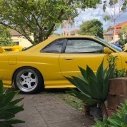How Much Would It Cost Me To Replace A Rb20 Turbo Gasket?
Announcements
-
Similar Content
-
Latest Posts
-
Also playing with fire if they start to flow more air down low than what the stock twins can. It's not even up top you need to worry, it can be at 3000rpm and part throttle and it's getting way more flow than it should.
-
By joshuaho96 · Posted
You still want a proper tune on the stock ECU though. Stock tune + stock ECU with GT-SS/-9s is probably playing with fire if you're running more than stock airflow/power.








Recommended Posts
Create an account or sign in to comment
You need to be a member in order to leave a comment
Create an account
Sign up for a new account in our community. It's easy!
Register a new accountSign in
Already have an account? Sign in here.
Sign In Now